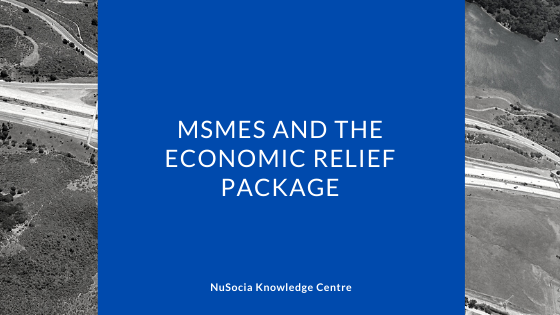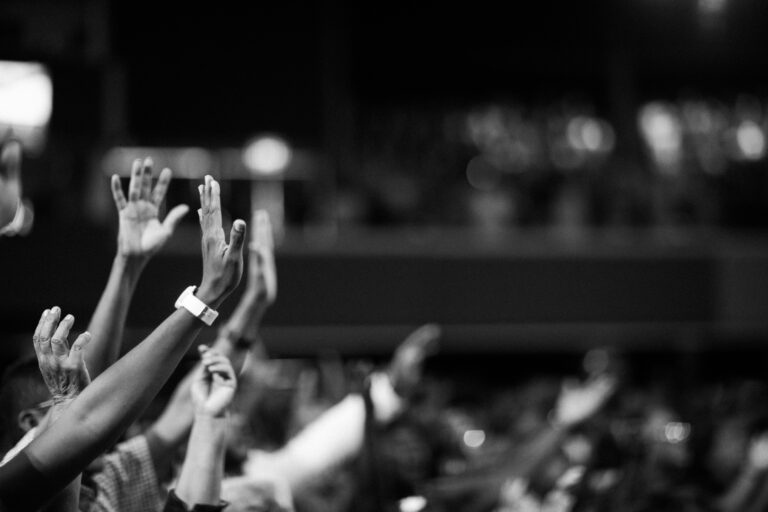A question that needs revisiting given pandemic like COVID 19
COVID-19 is an unprecedented event impacting humanity across nations. There is also the worry about the livelihoods of millions of people in the low-income bracket, especially in the developing world. One of the worst affected segments of society during these times has been the daily wage earners who have lost their income source due to the lockdown measures.
In India, with approximately 90% of its workforce in the informal sector, the government faces a Catch-22 situation. It can neither allow people to go about and mingle nor can it ignore the plight of the low-income segment of the population. There are useful interim measures in the forms of Direct Benefit Transfers, access to ration on subsidized rates, etc. are being done for people who have BPL cards. For the segment below them – the one that of migrant labor with no shelter or identity documentation and are still off the grid for formal banking measures; the challenge is that of survival, every day.
Several Non-profits, philanthropists, charitable organizations, religious and political outfits and individuals in large numbers have come forward to serve the needy, by offering food, shelter and other essentials. We also hear about companies and businesses declaring their support to COVID-19 relief funds through different mediums. There are heartening stories about citizens in their capacities preparing food packets and distributing them to the needy.
But, the impact of this pandemic is perhaps worse than any Disaster, leaving us with the pertinent question of how prepared we are to handle such events?
Disasters in India
Disasters in the form of natural calamities are not something new for India and the frequency has only increased in the last decade. It is estimated that India loses about 2 percent of its GDP to these disasters. Between 1970 and 2009, India experienced 371 natural disasters killing 1,51,000 persons with 1.86 billion affected. Floods are the most frequent disaster in India. Between 2009 and 2020, India some of the worst floods, landslides, and cyclones.
Almost all states in India are prone to one or other kind of calamity. Every time a disaster strikes, government, non- profits and individuals have acted with a great sense of responsibility and empathy. In one of the recent incidents of Kerala floods in 2018, contribution and support that arrived for relief were noteworthy and one that upholds the value of human kindness. While that was great, but the question remains: How prepared are we to handle these scenarios?
Seventeen years back, I arrived in Bhubaneshwar, the sleepy capital of the State of Odisha, as a young student to pursue a Master’s program in Rural management. During the course induction, I witnessed in person the realities’ of the aftermath of disaster struck villages which even after two years of Cyclone that hit the eastern coast of India in 2001, were not back to normal. In 2004, while I was still at Campus, Tsunami struck south India killing 10,749 people and impacting 2.79 million people. Globally a whopping 3129 million US dollars came as a private donation which was six times more aid funding provided by any institutional donors –that showed the human might of togetherness, in the face of disaster. As I moved on in my career since then – I have seen many such disasters strike different parts of the country and the response of aid and post-disaster rehabilitation work – some of it, from close quarters.
What is right about how we are responding to disasters?
In India, the Disaster Management Act was passed in 2005 that led to the set up of the National Disaster Management Authority. It is supported by The State Disaster Management Authorities and District Disaster Management Authorities. Further, A National Disaster Response Force is set up. We saw the exemplary functioning of our NDRF forces in the disasters since then.
In terms of preparation, today India has a Tsunami warning system. Odisha state, for example, saved thousands of lives during Cyclone Phailin in 2013 and Fani in 2019, through disaster preparedness such as early warning system and community preparedness.
Is that enough? –questions that trouble me.
Despite all the possible efforts of our government bodies and significant improvement in disaster response, there are a few questions that have always bothered me in times of such crisis.
- The first line of Civil Defence: There is no formal structure to prepare a team of civilians at the community level who can join forces to support the NDRF. It takes time for external support to arrive and navigate a new territory amidst a disaster. If each community have their disaster warriors trained, the relief work can happen much quicker and smoother.
- Equity is not ensured in disaster relief: There are many actors on ground – NDRF teams, local police, local volunteers, national and international NGOs, Corporate CSR teams/volunteer teams and all the donations/relief material coming in from all parts of the country from citizens – but there is a hardly ever a sense of who is the central command and control. Everyone does what they feel is right. As a result, while some areas get oversupply, others are always underserved. In my view, It’s the local administration which understands the region and the people well, and hence they must be the nodal point – with all other agencies supporting them.
- Supply vs Demand : A few days back, in the apartment complex where I stay, some of us; resident decided that we should prepare breakfast, lunch and dinner for our building security guards and house-keeping staff who were coming to work for us despite the lockdown. A noble thought. Isn’t it? We took turns in providing the tastefully prepared home-cooked meals, however within 2-3 days – one of the senior security guards approached us on behalf of all of them and said that rather than a cooked meal – if we can provide them ration for 21 days (lockdown period), it would help them to cater for themselves as well as their families and they would eat – what they like. Obvious is sometimes not so obvious. At the time of the disaster, all forms of support coming in from various sources are generally based on the donor’s best judgment of what might be needed v/s what is actually needed. Eg. During the Kerala floods, reports were coming from ground zero that besides dry ration and clothes, people needed medicines, Mosquito repellents and mobile charging facilities. There are only a handful of organizations that could do quick need assessment before starting to do their relief work.
- Short term vs Long Term: While there is always an immediate response towards relief with support pouring in from all quarters, what often gets neglected and missed out is the rehabilitation of the impacted. That’s the reason that often we see people continuing to linger on in relief camps for much longer than anticipated, often leading to other social issues. Some of these relief camps continue to become illegal colonies. Disaster rehabilitation or preparedness severely lacks funding as compared to disaster relief – possibly due to the donor visibility in the first two areas. Support to disaster must not end when the emergency stops, and thus actors in the domain must seek help for both short-run as well as long-run initiatives.
- Strategic View to Disaster Preparedness: In the social sector where intervention in health and education areas are looked at in the long term and with strategic intent, shouldn’t the disaster preparedness be looked at with the same lens – since the impact of the disaster is often on all sectors and all segments. Today with COVID19, the impact discussion is equal if not more, about economic fallout as it is about the health and deaths from the disease itself.
- Dedicated actors / Experts: In India, there are hardly NGOs that specialize in the area of disaster relief. While many non- profits regularly have come forward and helped with the relief work, disaster management is not a focused work area for them. Non- profits assumes that they are capable of handling any humanitarian crises, which may not be the case always. For example, an organization that has worked on Public health in communities is much more equipped to handle community response and relief that an organization that had worked on vocational training. By leveraging their community presence and other program strength they may try and evolve capabilities in disaster management too.
With the increasing frequency of such disasters and unprecedented event, it is crucial to find solutions to the above points by the respective state and non -state actors and disaster preparedness, relief and rehabilitation agencies are held accountable for their effectiveness as well as efficiency rather than it being just another photo op / melting heart. If not, it would be indeed a disaster!
By : Manju Menon (Co-Founder and CEO, NuSocia)




